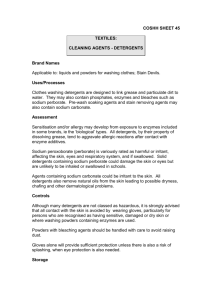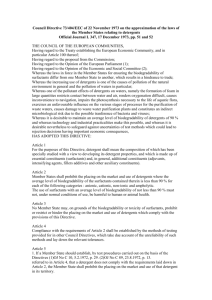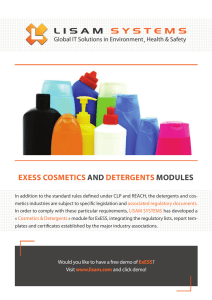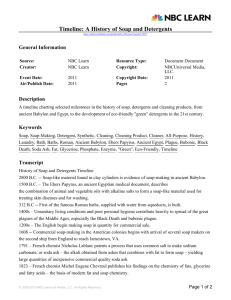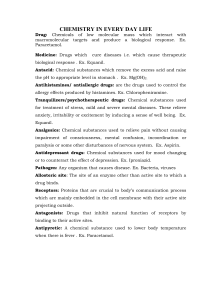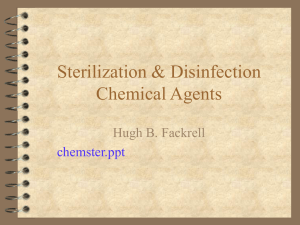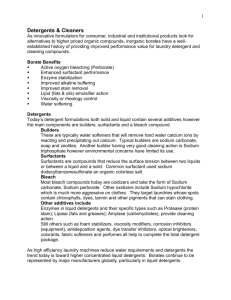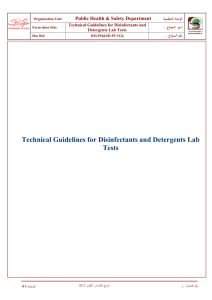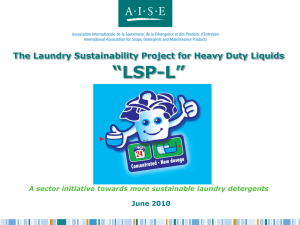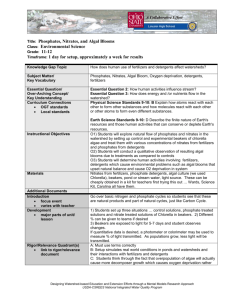Federice, Emilia P.
advertisement
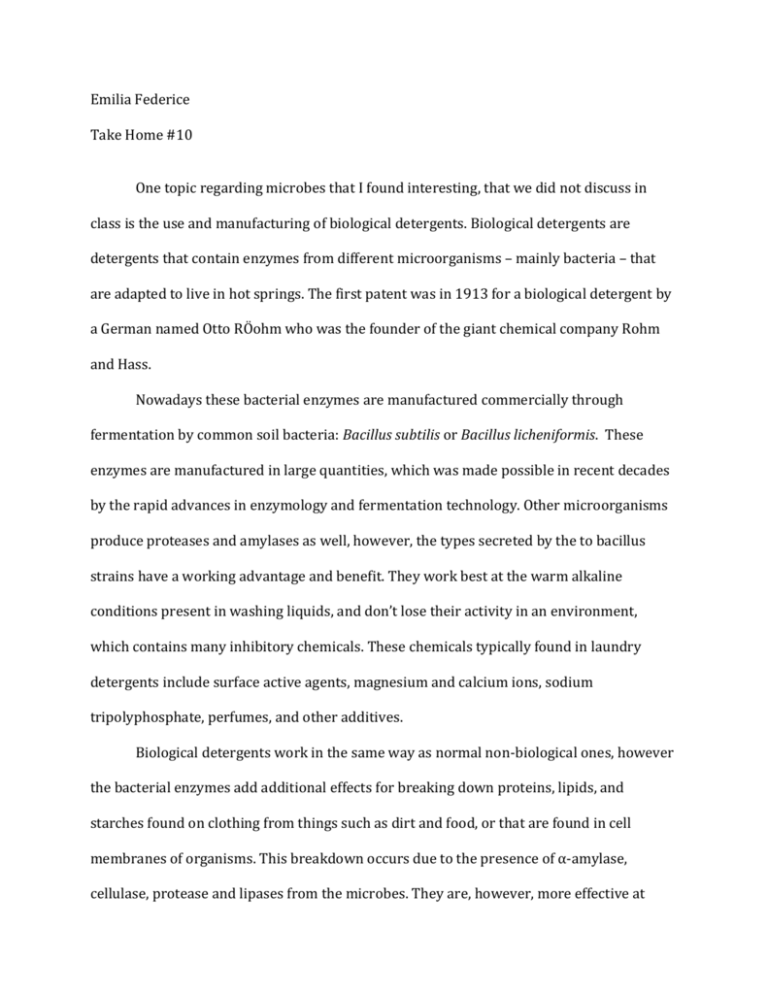
Emilia Federice Take Home #10 One topic regarding microbes that I found interesting, that we did not discuss in class is the use and manufacturing of biological detergents. Biological detergents are detergents that contain enzymes from different microorganisms – mainly bacteria – that are adapted to live in hot springs. The first patent was in 1913 for a biological detergent by a German named Otto RÖohm who was the founder of the giant chemical company Rohm and Hass. Nowadays these bacterial enzymes are manufactured commercially through fermentation by common soil bacteria: Bacillus subtilis or Bacillus licheniformis. These enzymes are manufactured in large quantities, which was made possible in recent decades by the rapid advances in enzymology and fermentation technology. Other microorganisms produce proteases and amylases as well, however, the types secreted by the to bacillus strains have a working advantage and benefit. They work best at the warm alkaline conditions present in washing liquids, and don’t lose their activity in an environment, which contains many inhibitory chemicals. These chemicals typically found in laundry detergents include surface active agents, magnesium and calcium ions, sodium tripolyphosphate, perfumes, and other additives. Biological detergents work in the same way as normal non-biological ones, however the bacterial enzymes add additional effects for breaking down proteins, lipids, and starches found on clothing from things such as dirt and food, or that are found in cell membranes of organisms. This breakdown occurs due to the presence of α-amylase, cellulase, protease and lipases from the microbes. They are, however, more effective at lower temperatures because the higher temperatures can denature some of the enzymes causing them to be ineffective. However, most biological detergents are used for biochemical separations and to supplement microbial culture medias, rather than washing of clothes. In culture medias, biological detergents are selective agents. They selectively inhibit bacterial growth by disturbing membrane structure. This occurs because of the structure of the detergents, which are long molecular structures that have a hydrophilic end and an end that dissolves lipids and the added microbial enzymes. There are three types of biological detergents: ionic, Zwitterionic, and neutral. Ionic biological detergents carry a charge that is typicall negative. Zwitterionic detergents carry both a positive and negative charge. Neutral detergents do not carry a charge. References: http://www.biosynth.com/index.asp?topic_id=141 http://en.wikipedia.org/wiki/Biological_detergent http://www.eng.umd.edu/~nsw/ench485/lab2.htm
